Bolt vs. Gas
By: Sean Utley
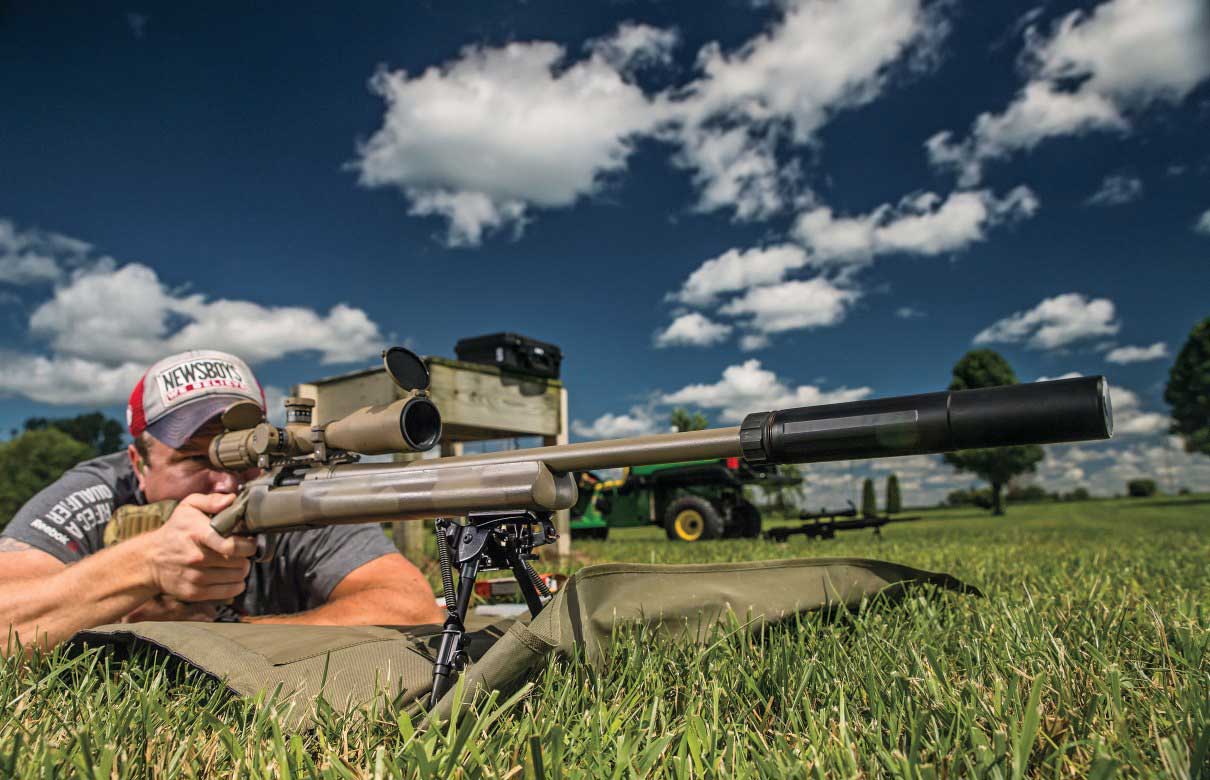 (Photo courtesy of "Shooting Times")
(Photo courtesy of "Shooting Times")
A suppressor case study
The only standardized testing for suppressors, if you want to call it that, is sound testing. But sound testing isn’t standard anymore. The Mil-Spec protocol was once the only way suppressors were tested: The sound-measuring device was placed 1 meter to the left of the muzzle and 1.6 meters from the ground. New thought processes challenge that standard, and now testing is done at the shooter’s ear. It’s easy to see arguments for both, but which test is optimal? If that’s not enough, even the sound-testing equipment varies. Some manufacturers use the Bruel & Kjaer (B&K) 2209, which is the military standard, some use a Larson Davis model, and some use other brands and models.
Hypothesis
While we can analyze decibel readings side-by-side, it’s unlikely that any consistency will be discovered. Sound levels vary based on atmospheric conditions, sometimes by as much as 3 decibels. Though that doesn’t seem like much, it is a significant amount in the world of noise metering and to those who are presenting their research and development to potential customers.
We can readily determine how our firearms respond to suppressors. Typically, there is some sort of change. This time we wanted to determine how one suppressor would affect two different firearms. A discussion with SureFire revealed that their suppressors find homes on AR-type rifles over 80 percent of the time. Thunder Beast Arms seems to be the choice for bolt-action rifles. We inspected how each firearm responded with a suppressor attached.
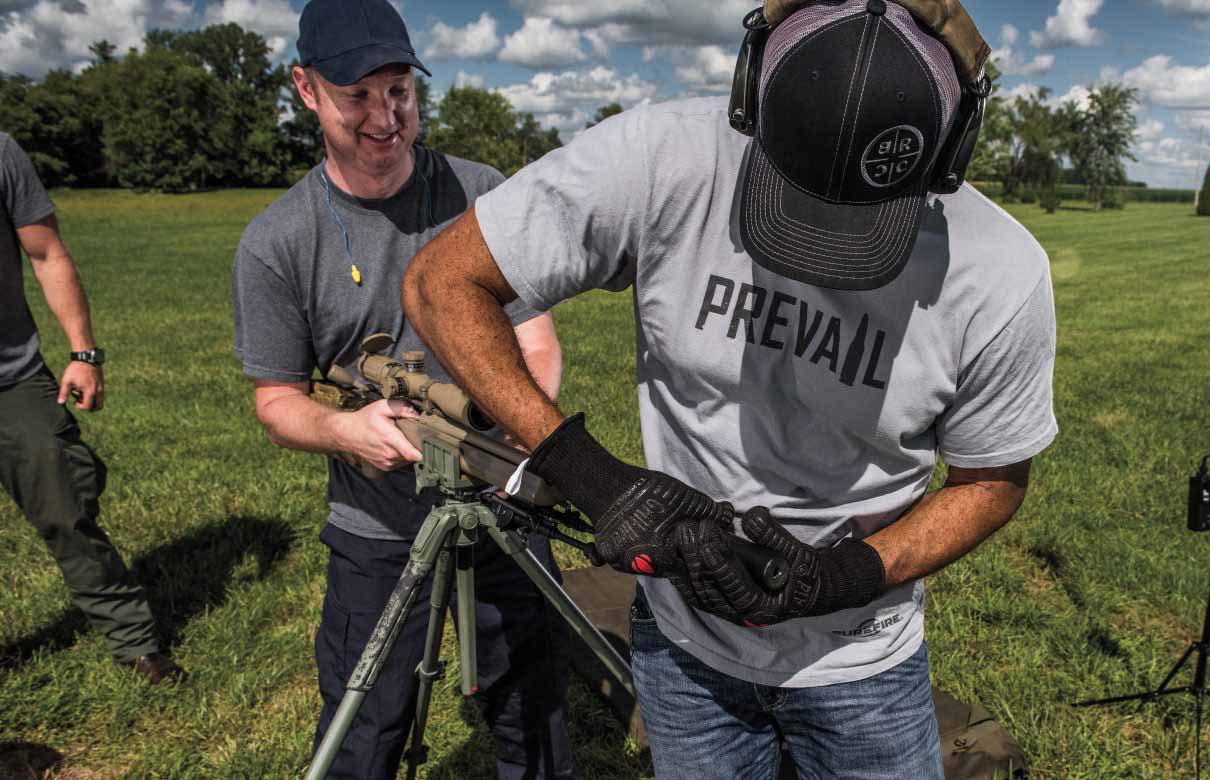
Suppressors heat up quickly, so shooters should use grilling gloves when removing and reattaching. (Photo courtesy of “Shooting Times”)
Variables
The testing was the same for both rifles. We used the same type of ammunition. The trick was to find ammo that performed well in both firearms. Ideally, they would perform nearly the same.
An older Remington 700 Tactical chambered in .308 represented the bolt rifles. Its action is basically stock trim, with only a 20-MOA Picatinny rail and an H-S Precision stock as upgrades. It’s a top feed, and the barrel was cut to 20 inches. In general, it’s an MOA or better rifle, and it shoots quite well.
Gas guns were represented by an Armalite AR-10 B-Series SuperSASS. It features a 20-inch, 1:10-inch twist barrel. Originally designed for the semiautomatic sniper program in early 2000, it was fitted with a rather crude adjustable gas system for suppression per original design requirements. It was designed to work with an Advanced Armament Corp. suppressor that was discontinued shortly after the SASS hit the civilian market. This rifle had never been fired suppressed.
You may find it interesting that both of these firearms are 10 years or older. They are fairly plain by today’s standards, but they remain benchmarks in the shooting world.
Federal Gold Medal Match (168 grain) is a consistent go-to for .308 rifles, and that is what we tested with.
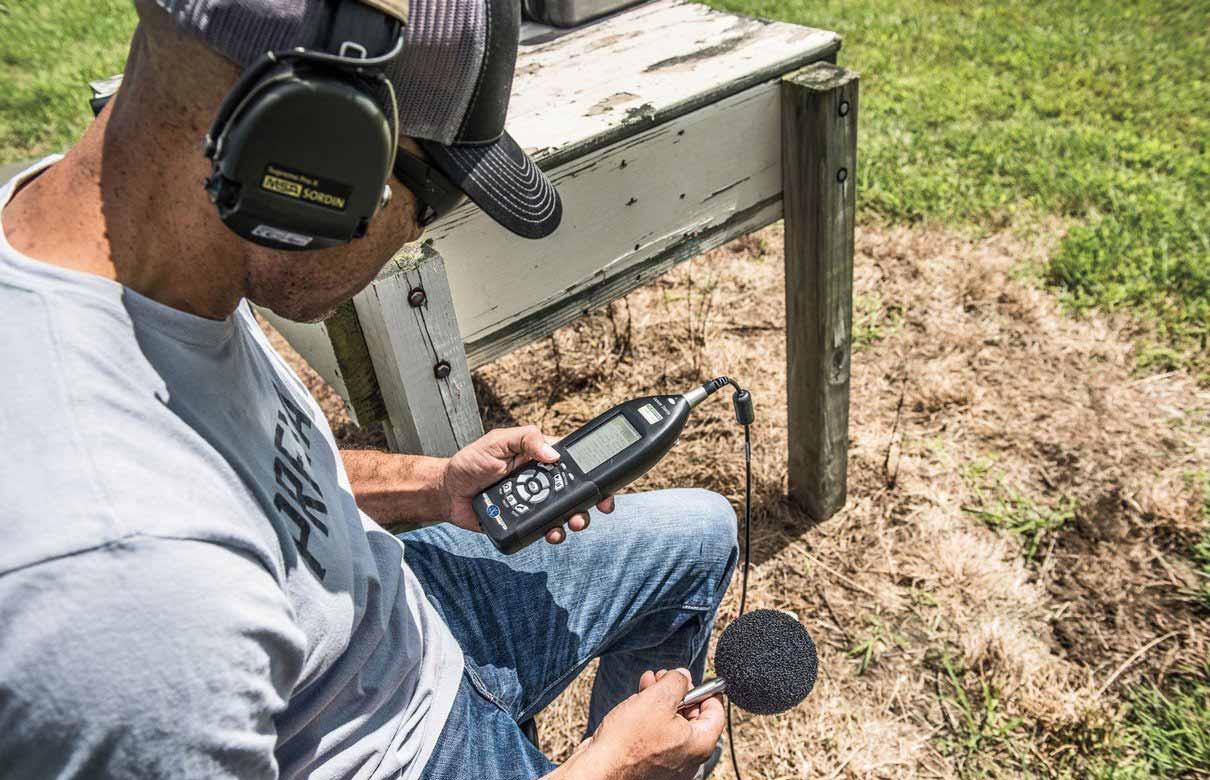
There are countless variables in measuring sound. We measured using a Larson Davis LXT. (Photo courtesy of “Shooting Times”)
Methodology
We used a sound meter and tested at the shooter’s right ear. We were interested in what the shooter would experience in sound reduction behind each rifle. We chose sound reduction because regardless of the meter used, the actual reduction remains consistently measurable, however, peak numbers will vary depending on the device and atmospheric conditions. We measured sound reduction with a Larson Davis that we rented from The Modal Shop in Cincinnati, Ohio. We calibrated the microphone for atmospheric conditions and recorded temperature and humidity levels at the time of testing. All testing was performed on the same day in a narrow time frame to keep measurements consistent. On this particular day, we had excellent weather.
Two shooters with strong firearms backgrounds shot each gun through the entire protocol to give the performance numbers a fair shake.
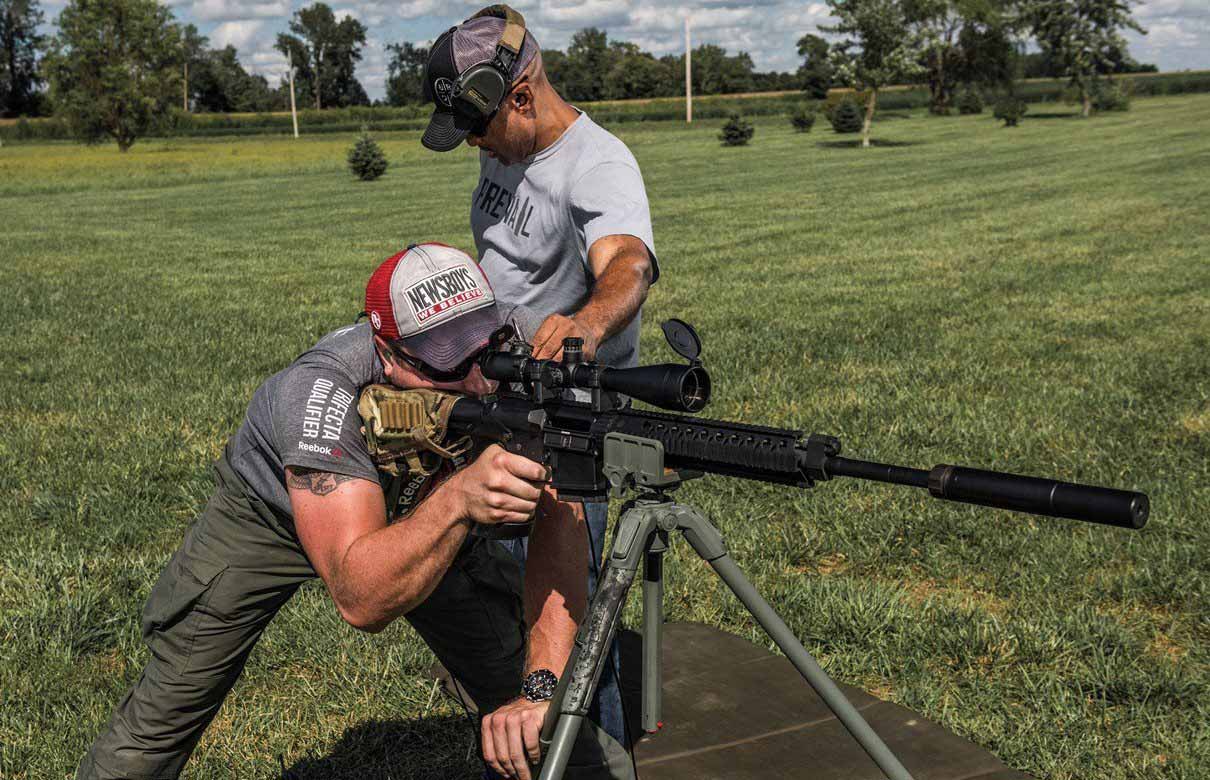
Multiple measurements are taken during testing to better understand how suppressors affect the shooting experience. (Photo courtesy of “Shooting Times”)
The Subject
The only thing we needed at this point was a suppressor. The goal was to select one that would perform well on either system with consistent attachment. That meant a suppressor with some sort of muzzlebrake attachment system instead of a direct thread-on. We wanted to ensure that the can would return to its original orientation when it was moved between firearms. With this in mind, a Dead Air Armament Sandman-L was selected.
The Sandman-L is rated up to 300 Win. Mag. It’s got good looks to go with its ruggedness, and it fared well in our testing last year. Everyone looked over the suppressor to make sure everything was in order, and then we started shooting.
Per Suppressor’s regimen, each firearm was zeroed and tested for groups: Five shots for three strings unsuppressed, then repeated suppressed. Changes in accuracy and point of impact (POI) were noted, as well as any other pertinent observations. We also removed and reattached the suppressor between the second and third strings. After Shooter 1 finished with the Sandman-L, we moved it over to Shooter 2’s rifle.
For both shooters, suppressed groups showed improvement, making the Sandman-L look like a champ. We always wonder if a suppressor will positively affect the shooting dynamics of bolt and gas firearms, particularly the AR platform, and the Dead Air Sandman-L clearly did. One of the shooters noted how much better both rifles felt with the suppressor attached and complained of the gas blowback on the Armalite. We were left wondering how well the adjustable gas block worked, if it worked at all, since the firearm ran fine with it switched to “suppressed” even with no suppressor attached. Both shooters enjoyed the significant decrease in noise, especially since they were left with the Dead Air muzzlebrake when shooting unsuppressed.
Point of impact shifted approximately 1.2 inches down and to the right on the Remington 700 for both shooters. Only Shooter 1 experienced POI shift in the Armalite, approximately 1 inch low.
Shooter 1
| Dead Air Armament Sandman-L
|
Avg.
Group (in.) |
Best
Group (in.) |
| Armalite Unsuppressed |
2.05 |
1.7 |
| Armalite Suppressed |
1.35 |
1.17 |
| Remington 700 Unsuppressed |
.89 |
.7 |
| Remington 700 Suppressed |
.85 |
.52 |
Shooter 2
| Dead Air Armament Sandman-L |
Avg.
Group (in.) |
Best
Group (in.) |
| Armalite Unsuppressed |
1.53 |
.95 |
| Armalite Suppressed |
1.1 |
.75 |
| Remington 700 Unsuppressed |
1.02 |
.85 |
| Remington 700 Suppressed |
.77 |
.58 |
POI Shift: 1.2 inches down and right Remington 700 1 inch low Armalite Super Sass
Measured Average Noise Reduction: -37dB Remington 700; -24.8 dB Armalite Super SASS
Conditions: 78 degrees, 55 percent relative humidity
Sound measurement recorded at right shooters ear.
Accuracy is the average of three, five-shot groups at 100
yards.
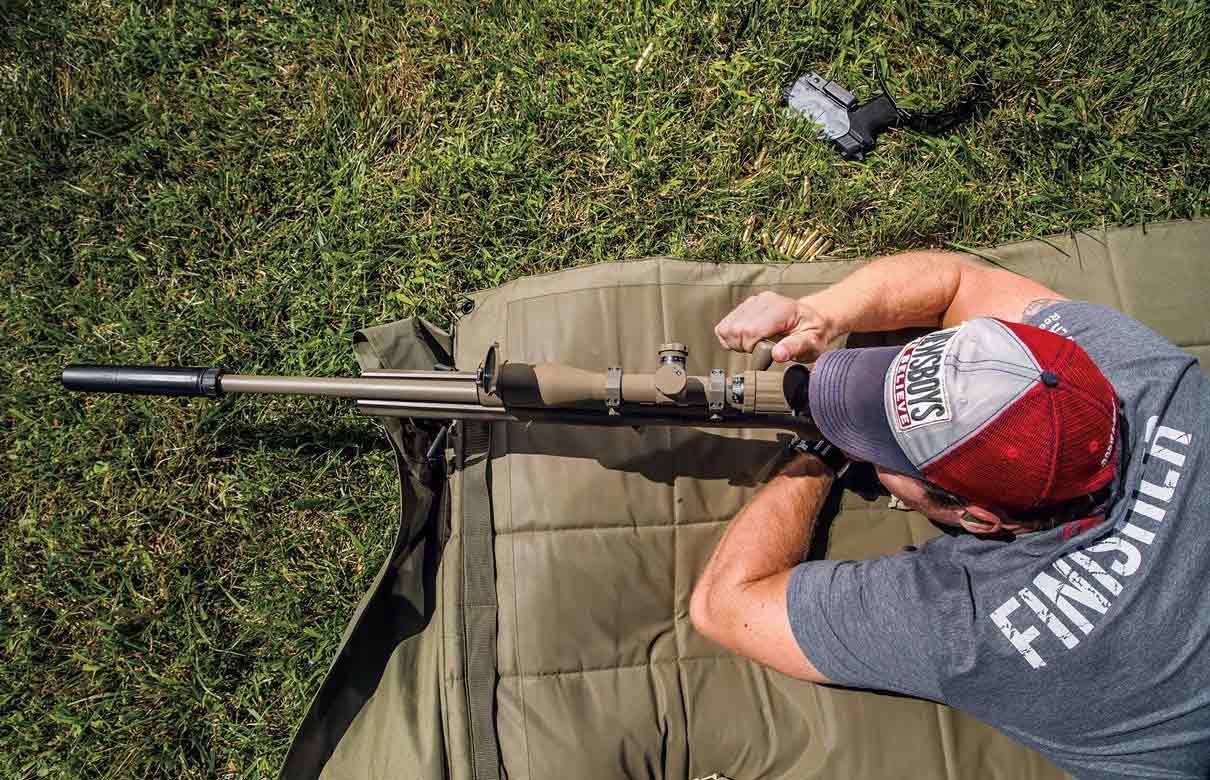
Based on this particular test, the bolt rifle offers the best suppressed shooting experience. The manually operated bolt forces noise and gas out of the muzzle end. The shooter experiences less noise and no blowback. (Photo courtesy of “Shooting Times”)
Observations and Conclusion
That brings us to the sound results, which we knew would be interesting. We were careful to place the microphone in the same place each time at the shooter’s ear. This was accomplished by sliding our mic in a cheek pad with a shell holder. This kept the mic solidly in place. Oddly enough, the unsuppressed Armalite, with its ejection port near the shooter’s ear, was slightly quieter than the bolt rifle by just over 1 dB. But once the suppressor was attached, the bolt-action rifle proved to be the best bet with a noise reduction of 37 dB. The ejection port noise worked against the suppressor, posting only a 24.8 dB average reduction in sound. That’s significant. If we revisit the fact that most cans go on semiautomatics, then we have to wonder how this observation can be addressed, if at all.
The only certainty in suppression is that there are many factors. Nothing remains constant, and noise reduction varies. Regardless, each shooter loved the suppressed experience. The sound numbers vary day by day and from firearm to firearm, but suppressors are more of an experiential shooting tool than a be-all, end-all of statistical inputs and outputs.